
5 minute read
The Masonic Hall of Fame
New Inductees Honored in the Exhibition “The Masonic Hall of Fame: Extraordinary Freemasons in American History”
Cover Photo: Magic Lantern Slide, Paul Revere's Ride, 1896-97. Scottish Rite Masonic Museum & Library, Gift of Anne R. Berntsen, 2008.023.41.
by Hilary Anderson Stelling, Director of Collections and Exhibitions, Scottish Rite Masonic Museum & Library
Paul Revere
“It is the greatest happiness of my life to have presided in the Grand Lodge at a time when Freemasonry has attained so great a height.” —Paul Revere, 1797
Famously, Paul Revere (1734-1818) brought word to his fellow colonists that the British Army was on the move. More than a messenger, Revere was a talented silversmith and engraver, a political organizer, an entrepreneur, and a Freemason. In the 1770s, risking himself and his business, Revere supported the colonial effort to achieve independence from Britain. As Grand Master of Massachusetts, Revere chartered 23 lodges, leaving a lasting mark on Freemasonry in the state. One observer remembered Revere as “Cool in thought, ardent in action, he was well adapted to form plans and to carry them in successful execution,—both for the benefit of himself & the service of others.”

Summons for the Lodge of St. Andrew, 1768. Paul Revere (1734-1818), Boston. Museum Purchase with the assistance of the Lodge of St. Andrew and the Kane Lodge Foundation, A2002/043/1. Magic Lantern Slide, Paul Revere's Ride, 1896-97. Scottish Rite Masonic Museum & Library, Gift of Anne R. Berntsen, 2008.023.41.
The Mayos
“Our father recognized certain definite social obligations. He believed… that the most important thing in life is not to accomplish for one’s self alone, but for each to carry his share of collective responsibility.” —William J. Mayo, 1934
Dr. William Worrall Mayo (1819-1911), along with his sons Dr. William James Mayo (1861-1939) and Dr. Charles Horace Mayo (1865-1939), established and fostered the medical practice that became the Mayo Clinic, renowned for its research, education, and medical care. Building on their work at a local Catholic hospital and in their practice— housed for ten years in the Masonic lodge to which Dr. Charles Mayo belonged—the Mayo brothers created a new kind of medical organization in which patients had access to multiple specialists who shared information about cases. In 1919, they endowed the Mayo Foundation for Medical Education and Research. Today the Clinic is known throughout the world and continues the work envisioned by the Mayos over one hundred years ago.
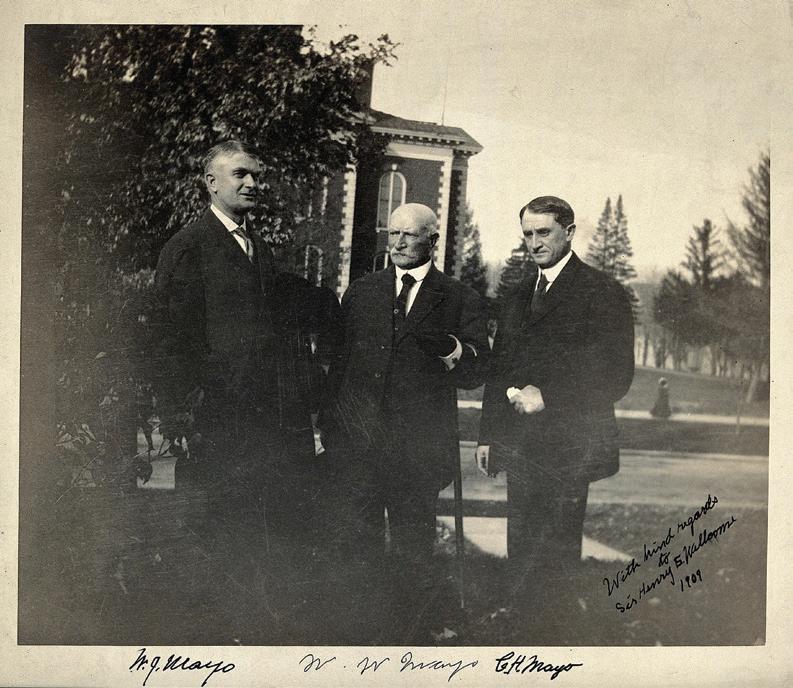
W. J. Mayo, W. W. Mayo, and C.H. Mayo, 1909. Wellcome Collection.
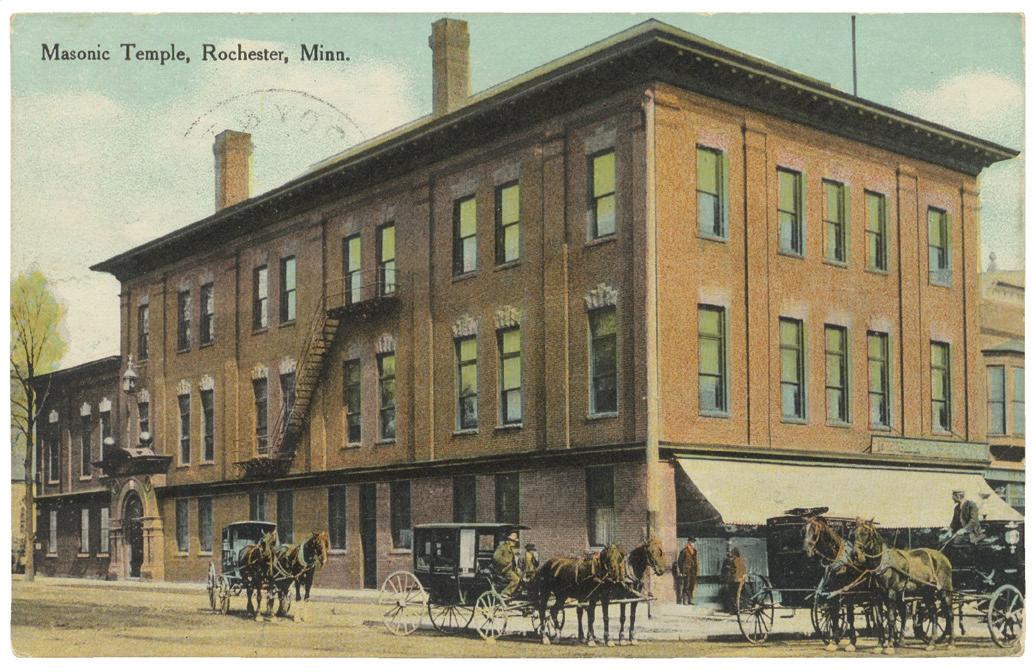
Masonic Temple, Rochester, Minnesota. Scottish Rite Masonic Museum & Library, 96/066/2074.
Harry Houdini
“…it has been my life work to invent and publicly present problems, the secrets of which not even the members of the magical profession have been able to discover…” —Harry Houdini, 1924
Born Erik Weisz in Budapest, Harry Houdini (1874-1926) was a world-renowned illusionist and escape artist. Houdini began his career as a magician in 1891. Around 1900, he started to find real success, performing a number of escapes from handcuffs in front of audiences. Between 1900 and 1920, Houdini toured Europe, attracting a wide following and earning the nickname “The Handcuff King.” Later in his career, Houdini became well-known for exposing fraud among spiritualists, psychics, and mediums who claimed to contact the dead through seances and other means. Houdini came to Freemasonry late in life. Raised in New York City’s St. Cecile Lodge No. 568 in 1923; he joined the Scottish Rite in 1924.

Houdini in Chains, ca. 1899. Library of Congress.
Franklin D. Roosevelt and the Mayo Brothers in Rochester, Minnesota, 1934. Franklin D. Roosevelt Library, NARA.
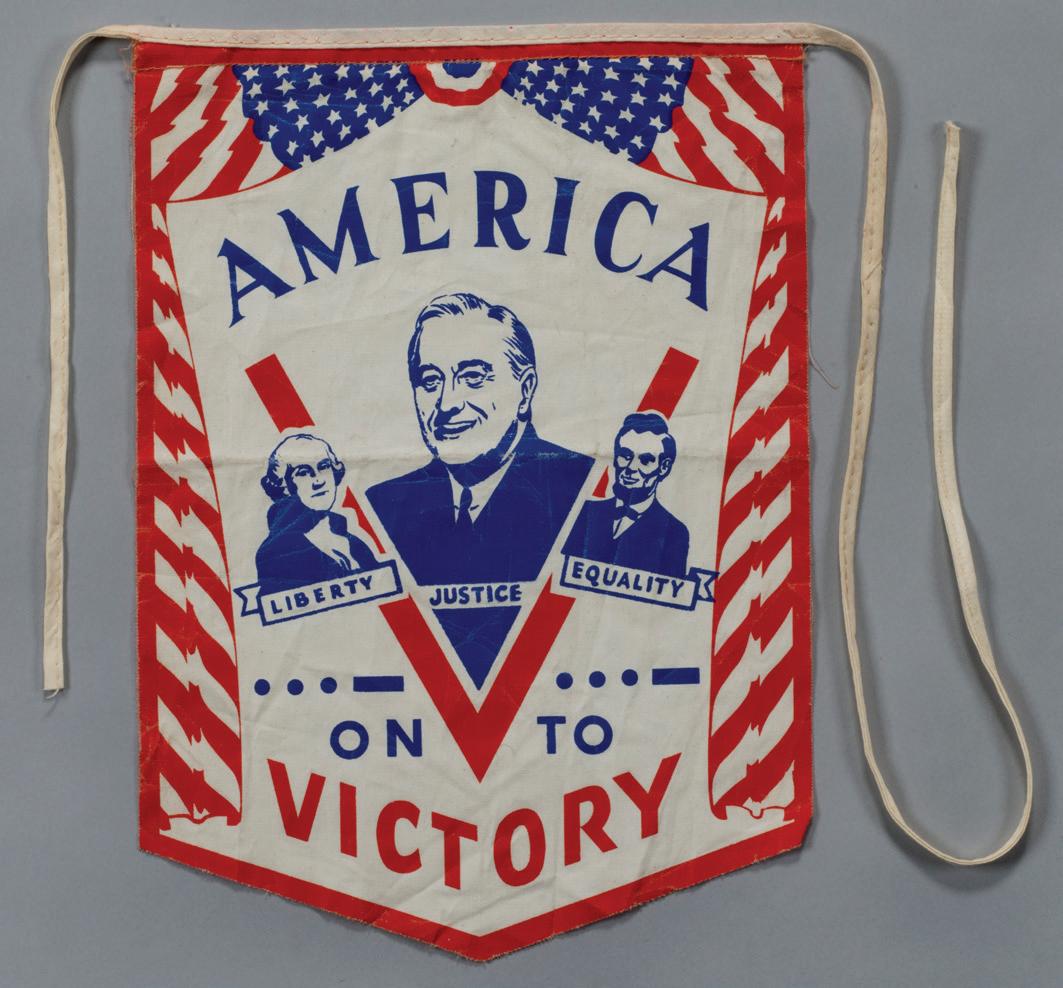
Campaign Banner, ca. 1944. Scottish Rite Masonic Museum & Library, Gift of Robert A. Frank, 2006.013.23.
Photograph by David Bohl.
Franklin Delano Roosevelt
“The more I come in contact with the work of the Masonic Fraternity the more impressed I am by the great charitable work and the great practical good we are carrying out . . .” —Franklin Delano Roosevelt, 1935
Franklin Delano Roosevelt (1882-1945) served as the 32nd President of the United States during a time of great upheaval. His twelve years in office, from 1933 to 1945, provided stability for a changing nation. Roosevelt’s New Deal, radical for the time, helped bring the country out of the Great Depression. His leadership during World War II was vital to Allied victory. Roosevelt’s wife, Eleanor, said of him: “...his chief interest was in seeing that the average human being was given a fairer chance for ‘life, liberty and the pursuit of happiness.’” Roosevelt joined Holland Lodge No. 8 in New York City in 1911 and became a Scottish Rite Mason while he served as the Governor of New York.
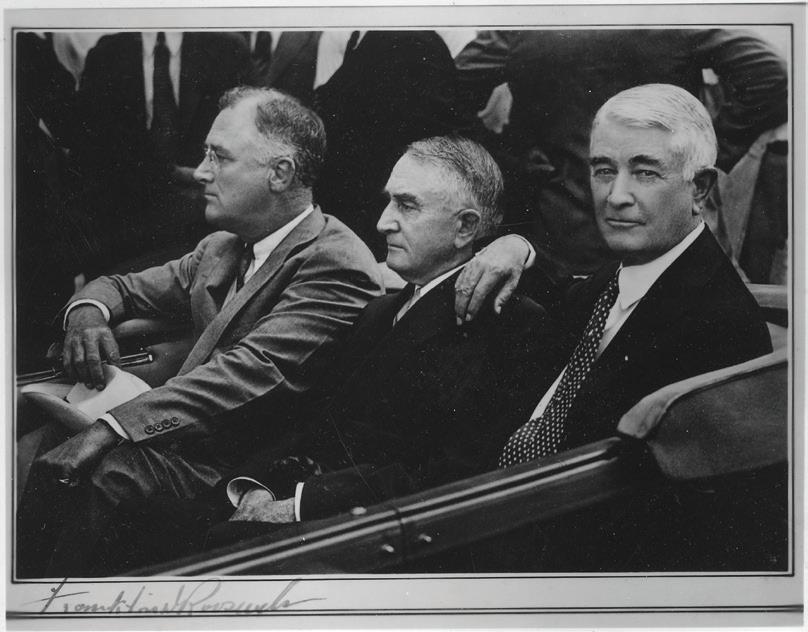
Franklin D. Roosevelt and the Mayo Brothers in Rochester, Minnesota, 1934. Franklin D. Roosevelt Library, NARA.
Thurgood Marshall
“In recognizing the humanity of our fellow beings, we pay ourselves the highest tribute.” —Thurgood Marshall, 1972
Thurgood Marshall (1908-1993) was a civil rights lawyer and the first Black justice on the Supreme Court. In 1940, Marshall founded the NAACP Legal Defense and Educational Fund, which served as the legal arm of the civil rights movement. There, Marshall litigated many cases seeking equal social opportunities and protection under the law, regardless of race. President Lyndon B. Johnson nominated Marshall to the Supreme Court in 1967. A member of Coal Creek Lodge No. 88, PHA, in Oklahoma, Marshall was also a Scottish Rite Freemason. In 1958, Marshall stated that without funding from Prince Hall Masons, many of the civil rights cases that he argued could not have been fought: “Whenever and wherever I needed money and did not know of any other place to get it, Prince Hall Masons never let me down.”
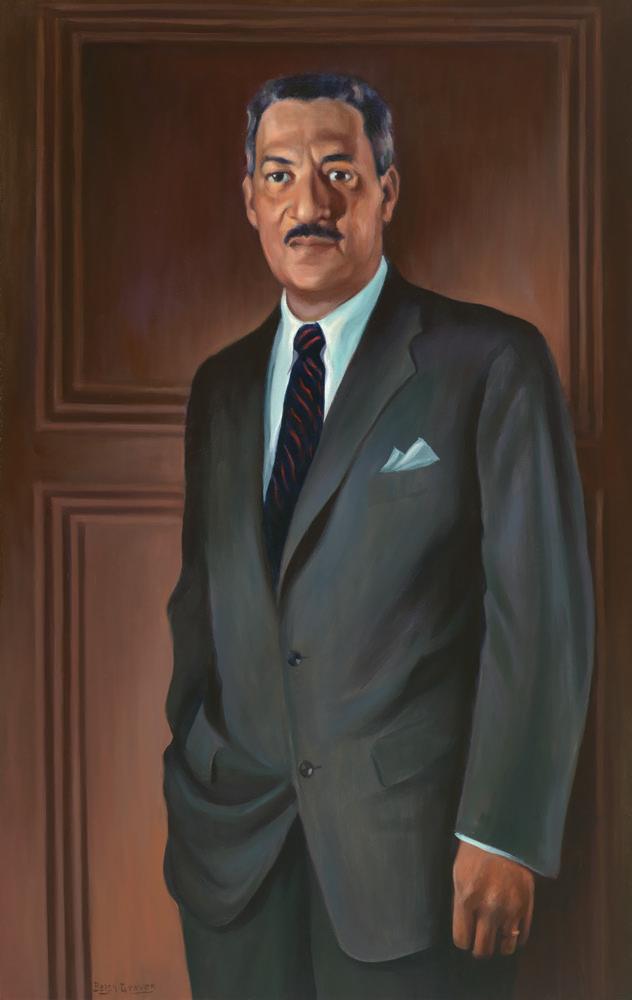
Thurgood Marshall, 1956. Betsy Graves Reyneau (1888-1964). National Portrait Gallery, Smithsonian Institution; gift of the Harmon Foundation.
© Peter Edward Fayard.

M.W. Prince Hall Grand Lodge, F.&A.M. for the State of Louisiana records, 1857-2002, Amistad Research Center, New Orleans, LA.








